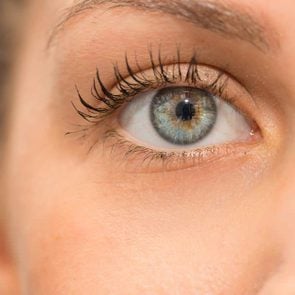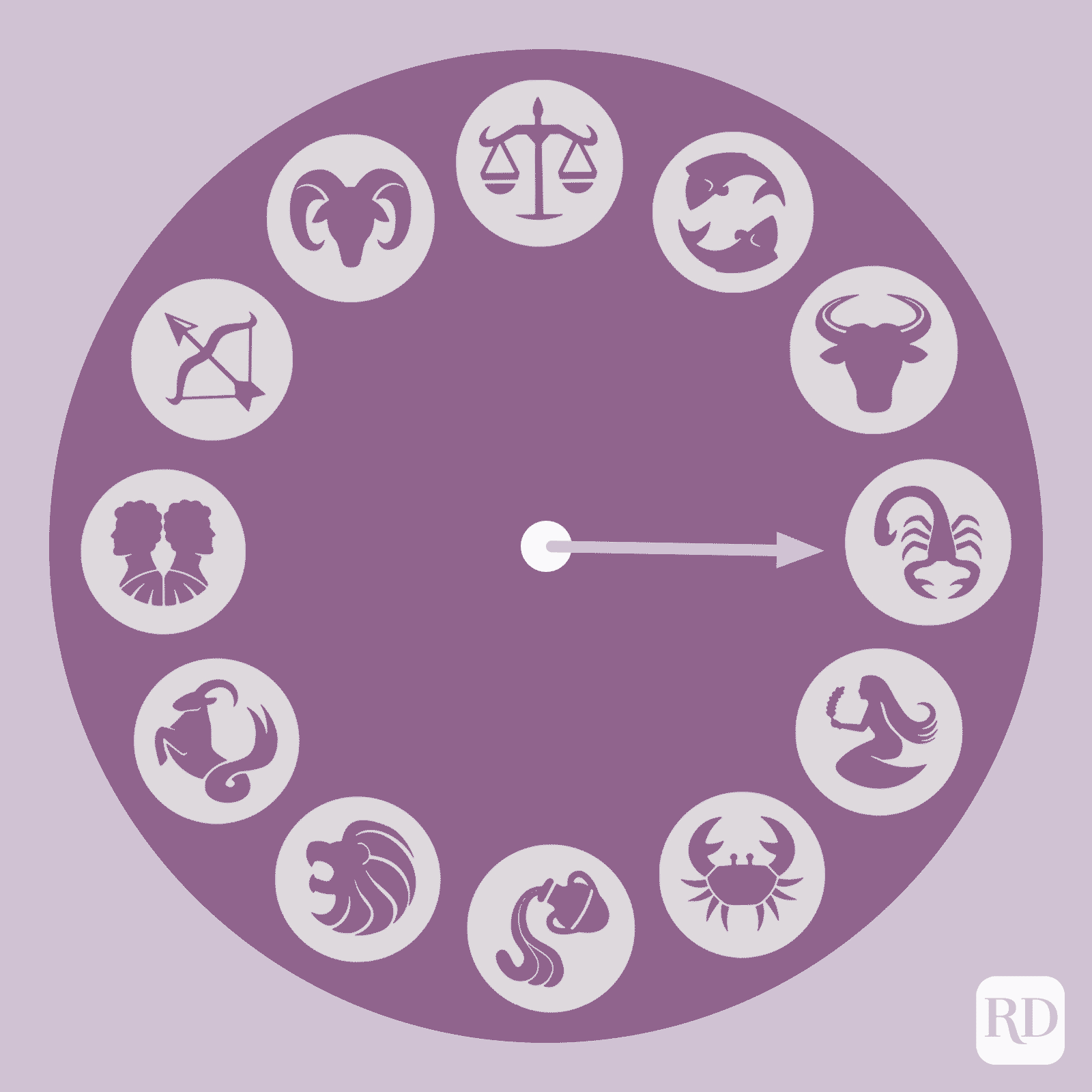This Is the Rarest Eye Color in the World
Updated: Mar. 22, 2024
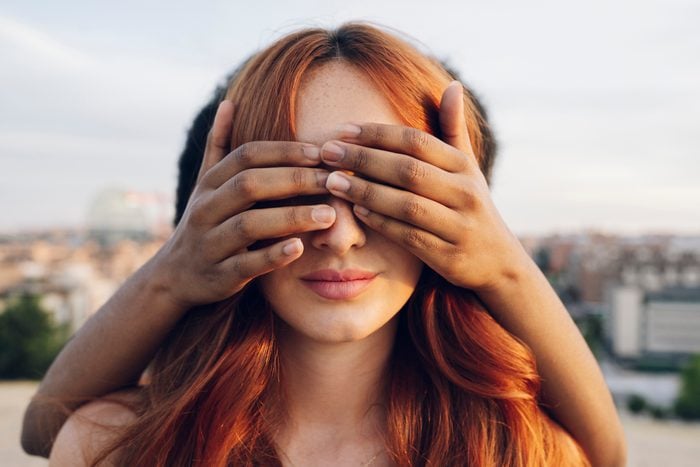
What determines the shade of your peepers? Experts weigh in on the rarest eye color in the world—and the genetics behind it.
It’s said that our eyes are the mirrors of our souls, so it makes sense that eye color is often romanticized. Van Morrison waxed poetic about a brown-eyed girl, while Eric Clapton sang about a woman who “made my blue eyes blue.” Eye color is a distinct part of your features, unique to you. In fact, no two people in the world have the same color eyes. And if you’ve ever wondered what the rarest eye color is, you’re not alone.
Similar to determining the rarest personality type or rarest hair and eye combination, eye color is complicated. While genetics play a role in all of the above, one gene in particular has a large hand in determining eye color. And here’s an interesting fact: When it comes to the rarest eye color in the world (spoiler, it’s not blue eyes), only about 2% of the population have it—the same percentage of redheads worldwide.
Get Reader’s Digest’s Read Up newsletter for more trivia, humor, cleaning, travel, tech and fun facts all week long.
What is the rarest eye color?
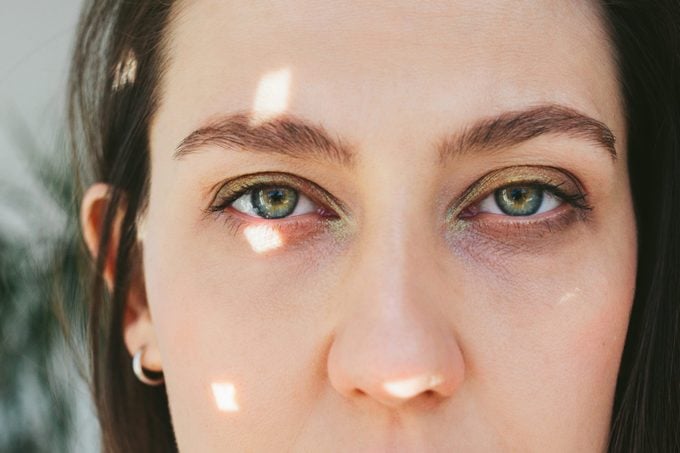
Green is the rarest eye color in the world, with only 2% of the world’s population (and fewer than one out of ten Americans) sporting green peepers, according to the American Academy of Ophthalmology (AAO).
What is the most common eye color?
When it comes to the most common eye color around the world, brown eyes take the cake. The AAO reports that as many as 79% of people worldwide have some variation of brown eyes, and in the U.S., nearly half (45%) of the population has brown eyes. In fact, it’s an inherited trait that dates back to our early ancestors—about 10,000 years ago, every human on earth had brown eyes, says the AAO.
Not all browns are created equal though. “Eye color is unique to everyone, and no one brown eye looks like another,” says Purnima Patel, MD, an AAO clinical spokesperson and founder of Ophthalmology and Retina Associates of Georgia.
How common are other eye colors?
Blue eyes are the next most popular eye color, but they are a more recent evolutionary occurrence, says Dr. Patel. About 27% of Americans have blue eyes, the AAO reports, which is likely due to immigration from Germany, Scandinavia, England, Ireland and Eastern Europe. And here’s the thing: Everyone with blue eyes actually shares one common ancestor. The first-ever pair of baby blues was a genetic fluke that was passed on—and on and on.
The second-rarest eye color is hazel, a mixture of brown and green with golden flecks. About 18% of Americans have hazel eyes, compared with about 5% of the world’s population. And while violet eyes are a rarity, they’re really just a blue hue, with light bouncing off the surroundings and turning the eyes violet.
What determines eye color?
In short, eye color is determined by melanin, which produces hair, eye and skin pigmentation.
The colored part of your eye, known as the iris, is comprised of two layers: the epithelium in the back, and the stroma in the front. The thin epithelium contains blackish-brown pigments, while the stroma has varying amounts of a pigment called melanin. Eye color is directly related to the amount of melanin found in the stroma. “People with brown eyes have lots of melanin in the iris, while people with blue eyes have much less,” says Yuna Rapoport, MD, a New York City-based ophthalmologist.
Your iris surrounds your pupil and helps control how much light enters your eye. Light bounces off this melanin in different ways and creates the illusion of various hues, Dr. Patel says. Due to variations in melanin, eye color runs the gamut from very light blue to very dark brown. Green irises (the rarest eye color) have less melanin than brown eyes but more than blue eyes, for instance. “Brown is on one end, blue on the other, and hazel and green are in between,” Dr. Patel says. This also means that brown is dominant and blue is the least dominant, also known as recessive.
Melanin also plays a vital function: protecting your eyes. “Melanin prevents the sun’s damaging rays from getting into our eyes and causing cataracts,” Dr. Patel says. “The more melanin you have in your eyes, the lower your risk is.” This means folks with brown eyes may be less likely to develop cataracts or sun-related damage to their eyes than their blue-eyed counterparts.
Do genetics affect eye color?
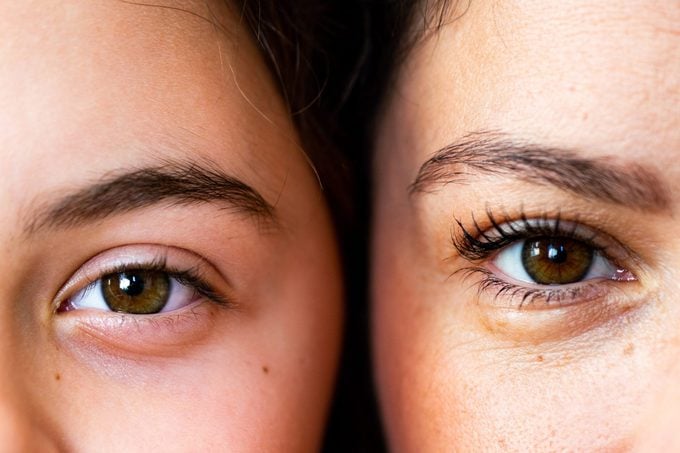
Eye color is quite complex and not as simple as two blue-eyed parents having a blue-eyed child, says Rick Sturm, an associate professor and research fellow at the University of Queensland Frazer Institute in Brisbane, Australia. Sturm’s career is focused on unpacking the genetics of human pigmentation, including eye color.
“Multiple genes contribute to eye color, but the main player is OCA2,” he says. In fact, 75% of the genetic contribution to eye color comes from this gene, which provides instructions for making the P protein found in cells that produce the pigment melanin (melanocytes).
Two genes, OCA2 and HERC2, work together to determine melanin content and, thus, eye color. “The OCA2 gene sits next to HERC2, and HERC2 has elements that control the regulation of the OCA2 gene,” says Sturm.
Several common variations in the OCA2 gene reduce the amount of P protein, which is why there is a continuum of eye colors from deep brown to grayish blue.
Do other factors determine eye color?
Yes. Besides genes, the thickness of your iris affects your eye color. “If it is thinner and you don’t have much melanin, your eyes can look gray,” says Sturm.
Geography matters too, he explains. In Brisbane, Australia, for instance, the breakdown of eye color is 25% brown, 25% green-hazel and 50% blue. But that differs around the world. “Brown eye color is predominant in African and Asian populations, and blue eyes are usually predominant in Europe. But the distribution of brown eyes is higher in southern Europe, and blue eyes are more common in northern Europe.”
Sun exposure may also play a role. Sturm has seen freckling in the eyes “that we know is associated with sun exposure.” But the rarest eye color he’s seen to date is actually polka dots or brown flecks in adolescents. He’s seen it twice, and researchers still don’t know why or how this anomaly occurs, but he doesn’t think it’s due to sun exposure at such a young age.
Can a person have two different colored eyes?
Yes, a genetic mutation that affects the development of melanin in the irises (called heterochromia) can cause different colored eyes. In fact, some actors, including Kate Bosworth and Jane Seymour, are known for having the condition. Additionally, if you sustain damage to the nerves of an eye, you can lose eye color, says Sturm. Plus, glaucoma and certain glaucoma medications have been known to change the color of your eyes.
Can you change your eye color?
There are some contact lenses and procedures that help change the color of your eyes temporarily or permanently, but beware of the consequences, says Rapoport. “The contact lenses are OK, but the material is not the same as what is used for prescription vision correction,” she says. “Using different colored contacts can increase the chances of developing corneal inflammation, ulcers and permanent scarring.”
Placing an implant in front of your iris to change its color is also an option, but this is risky and unproven. “It can cause inflammation, permanent damage or vision loss,” says Dr. Rapoport. Plus, it’s not approved by the Food and Drug Administration.
Laser corneal tattooing is another way to change your eye color. “This is like a permanent contact that changes the color of your cornea. Another laser procedure involves removing the dark brown pigment to reveal the eyes’ underlying color, whether amber, hazel, gray, green or blue. The bottom line? There is no proven and safe way of changing your eye color just yet, says Dr. Rapoport. Find out why you have a red spot on your eye sometimes.
Sources:
- American Academy of Ophthalmology: “Your Blue Eyes Aren’t Really Blue”
- World Atlas: “The World’s Population by Eye Color”
- Purnima Patel, MD, AAO clinical spokesperson and founder of Ophthalmology and Retina Associates of Georgia
- Yuna Rapoport, MD, MPH, founder of Manhattan Eye
- Rick Sturm, associate professor, University of Queensland Frazer Institute, Brisbane, Australia

